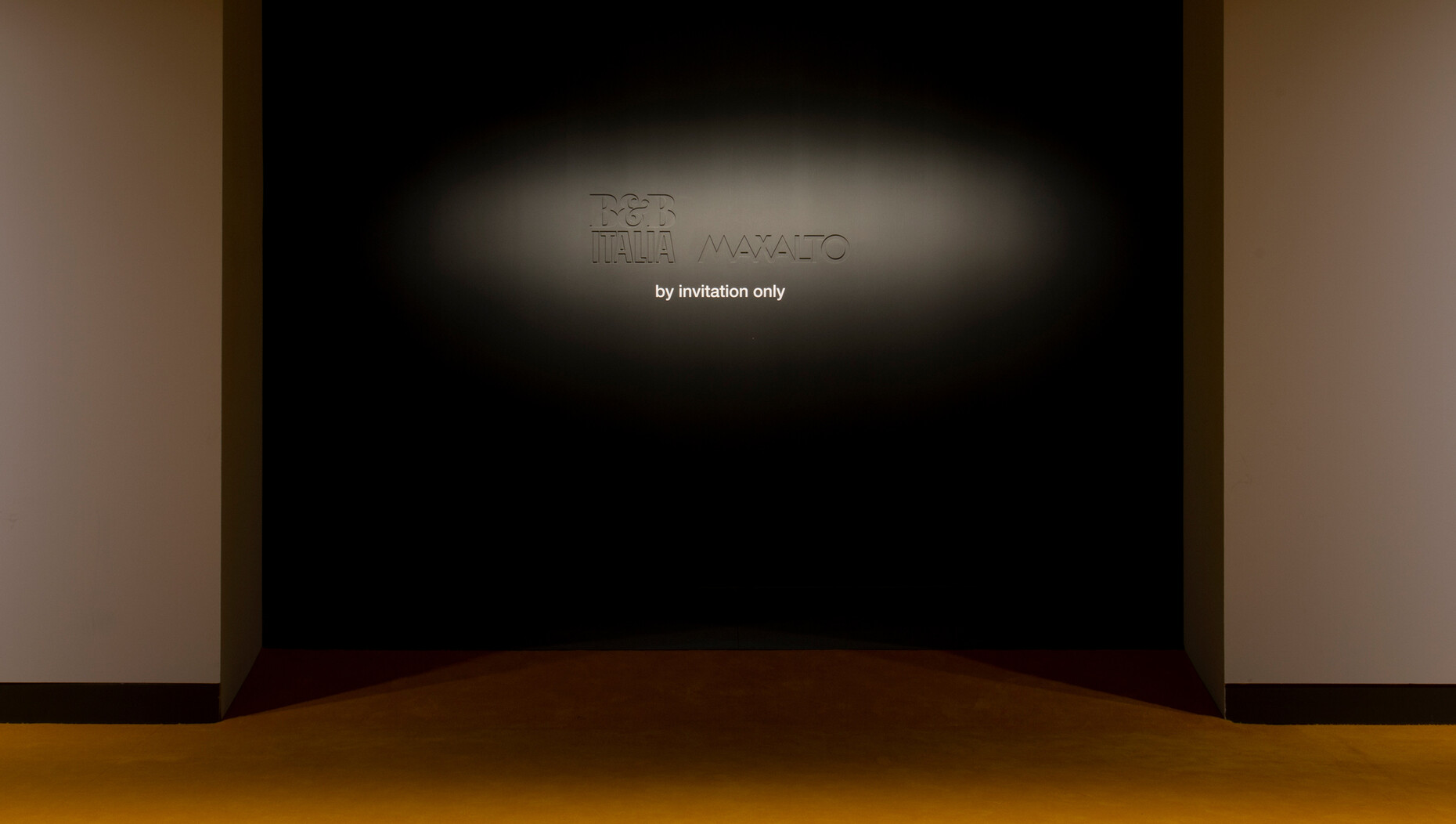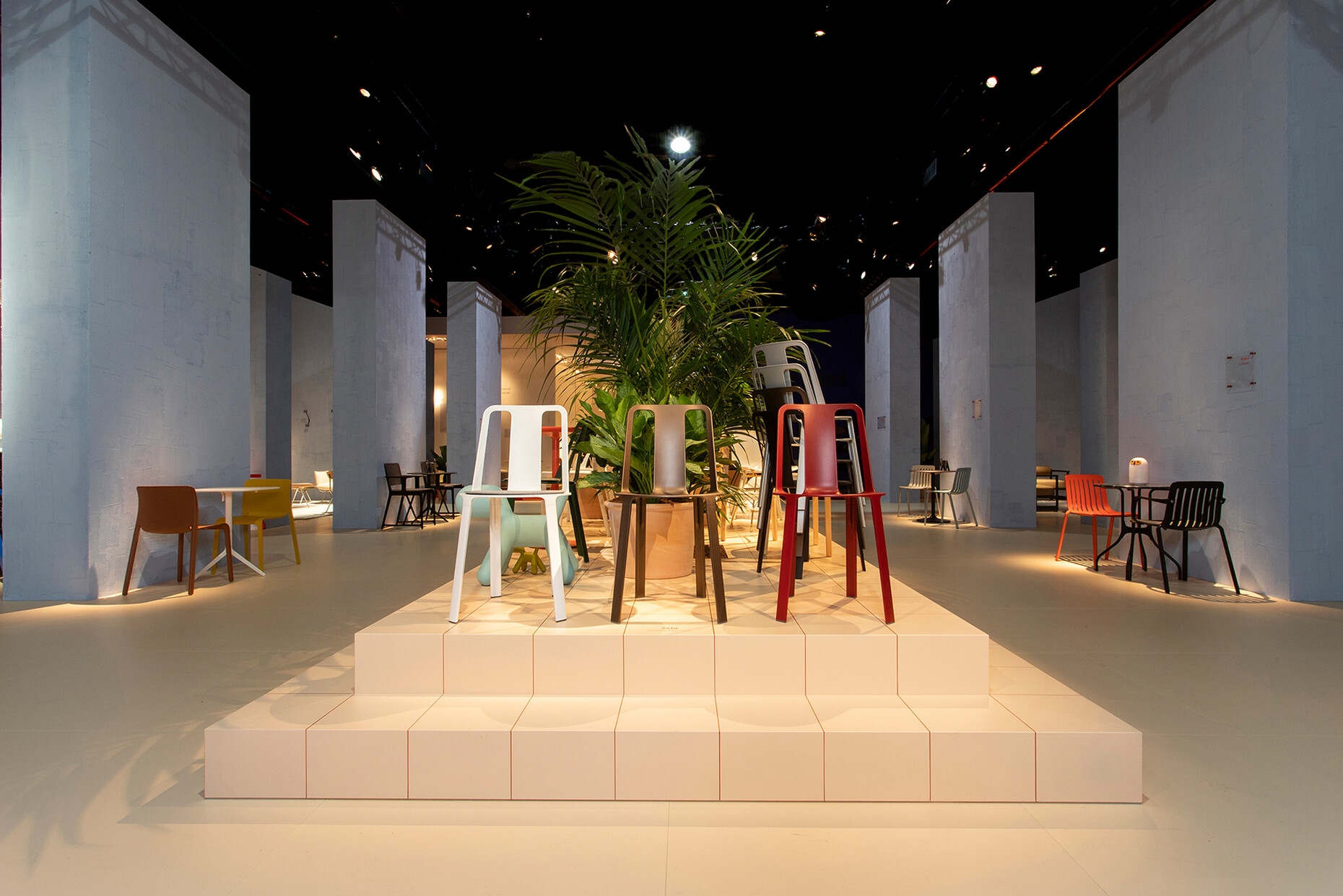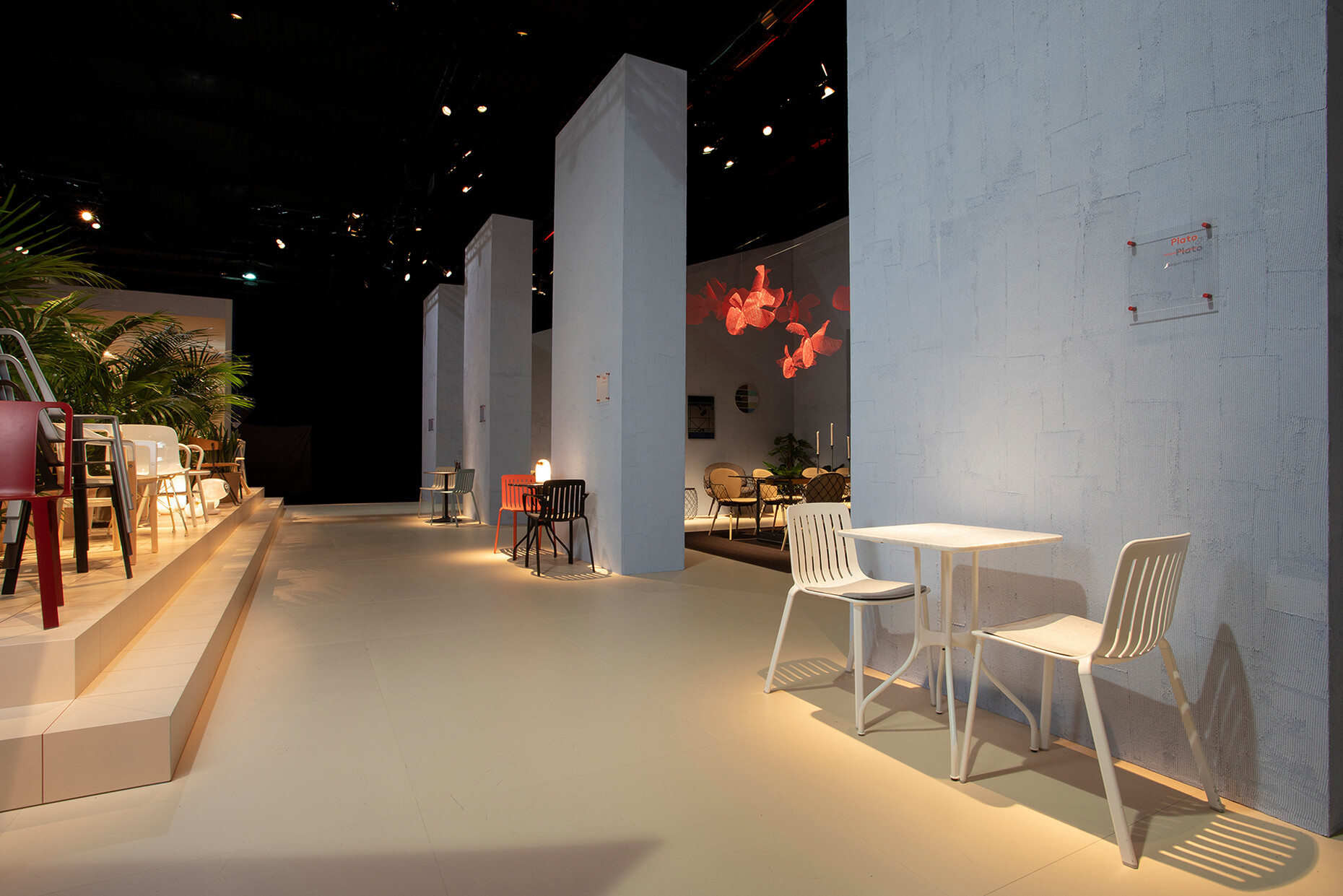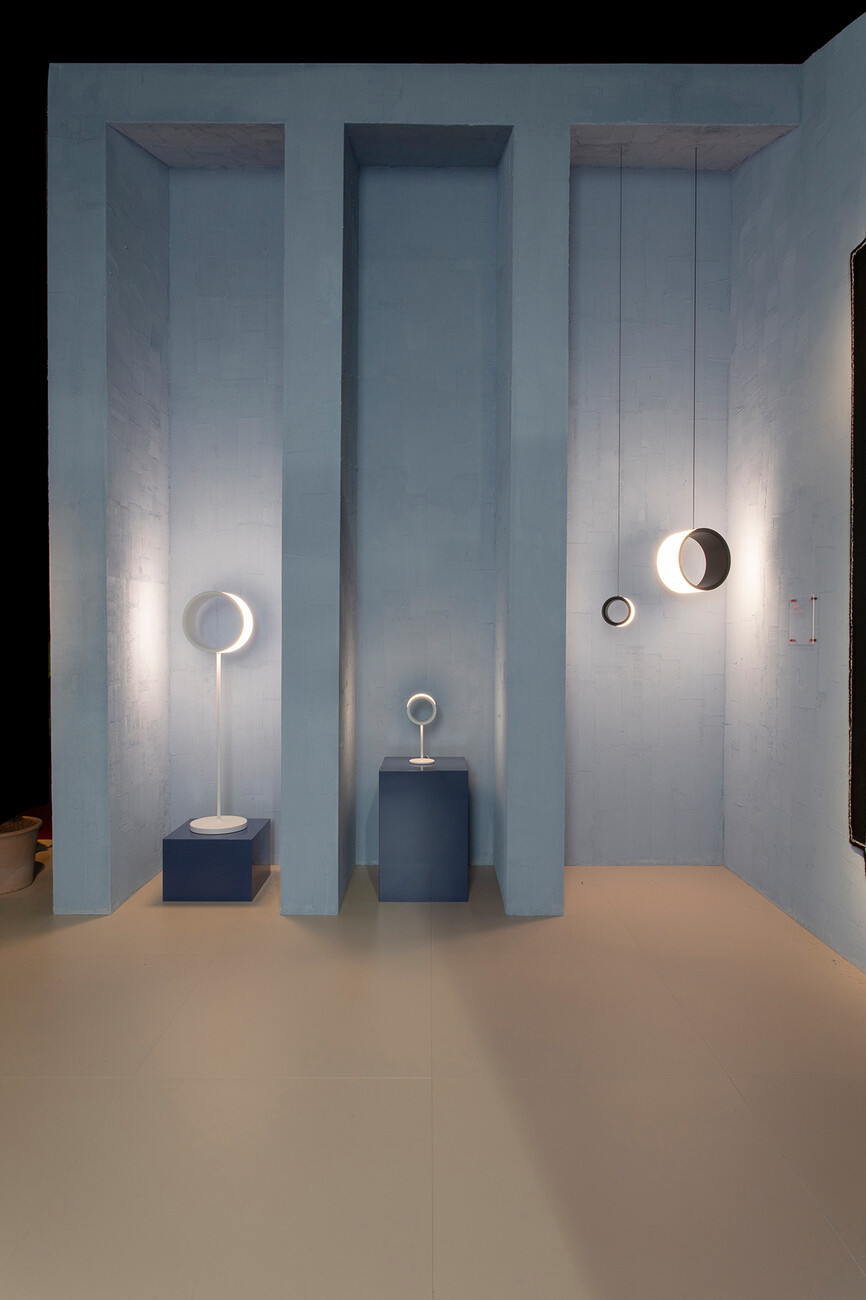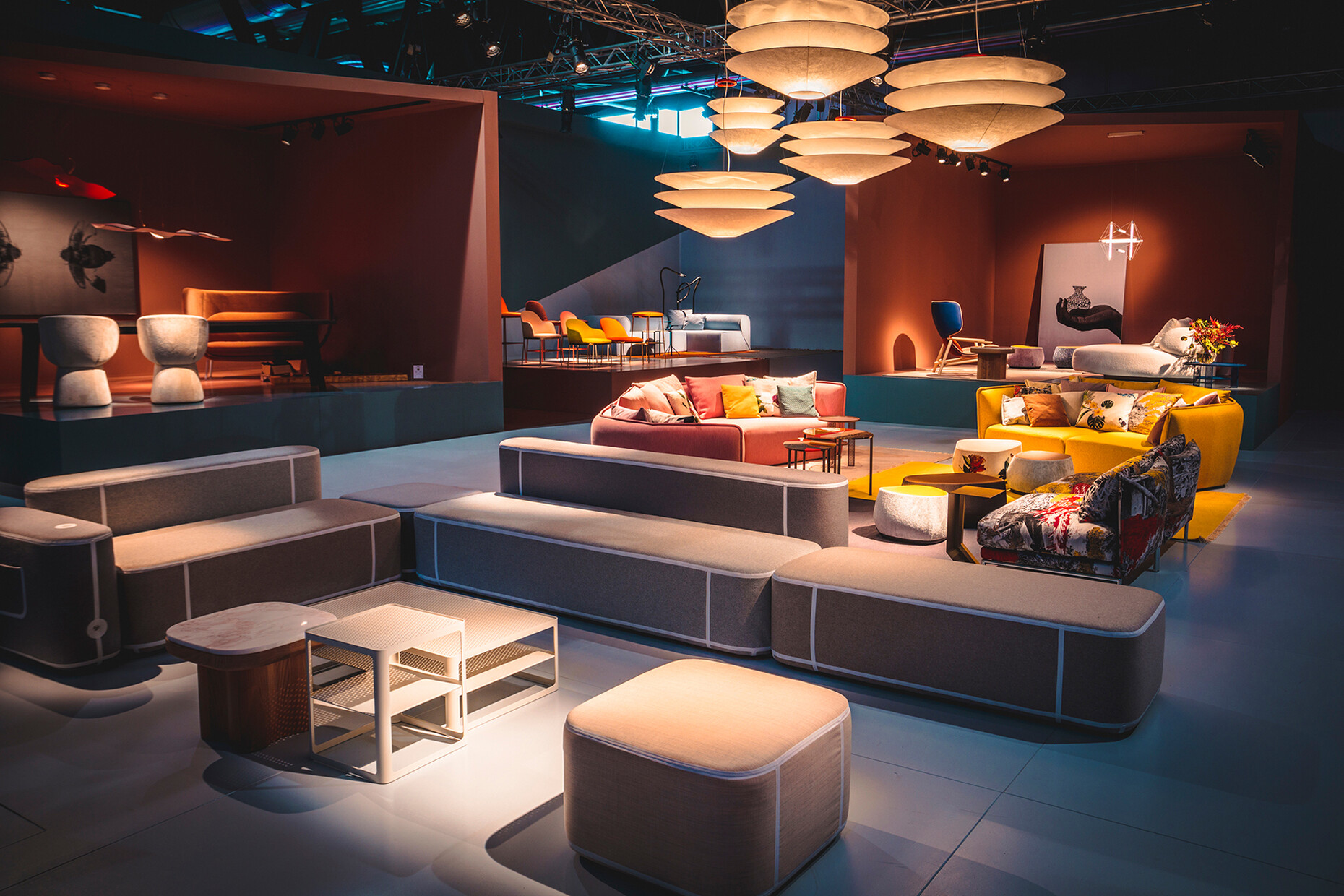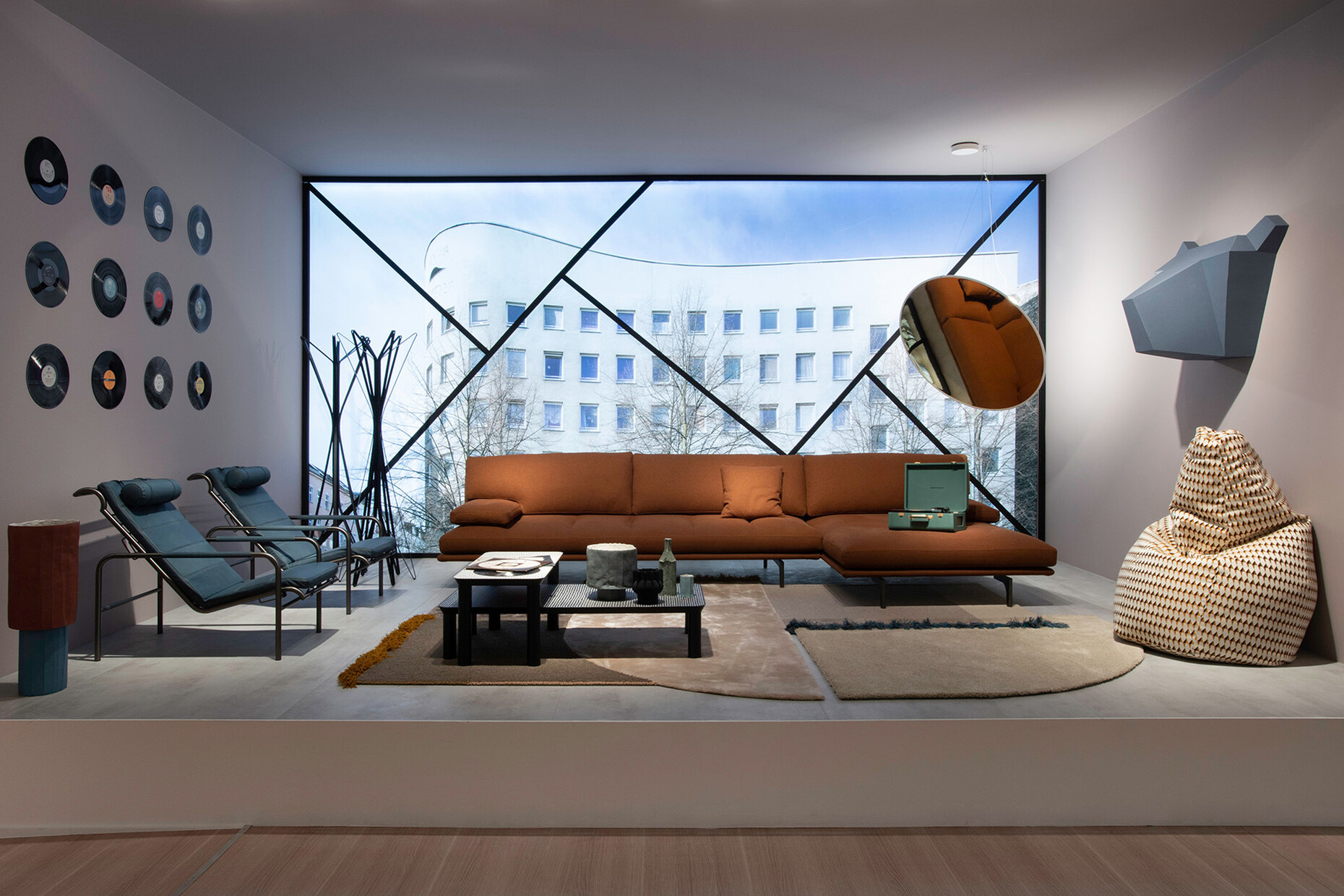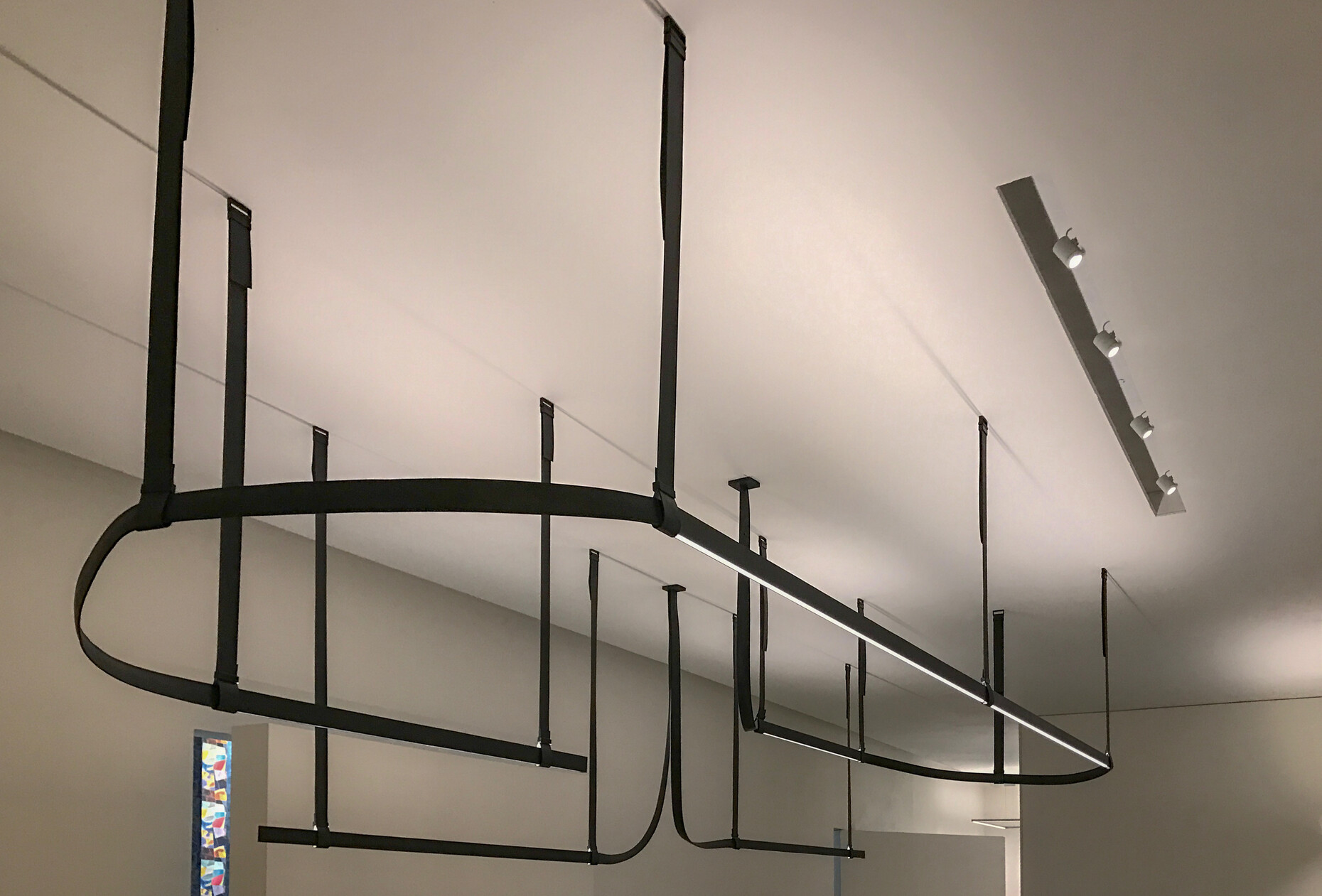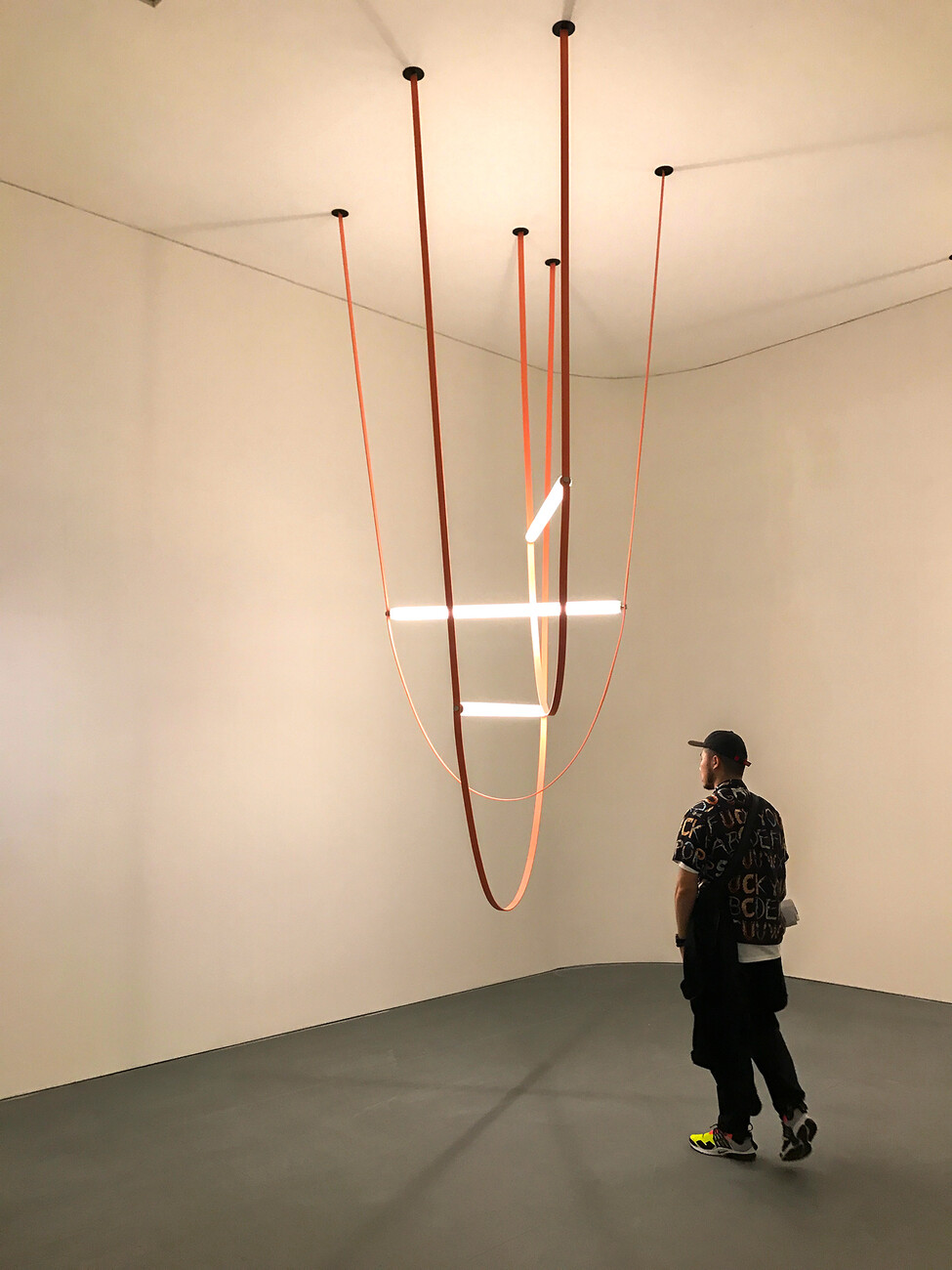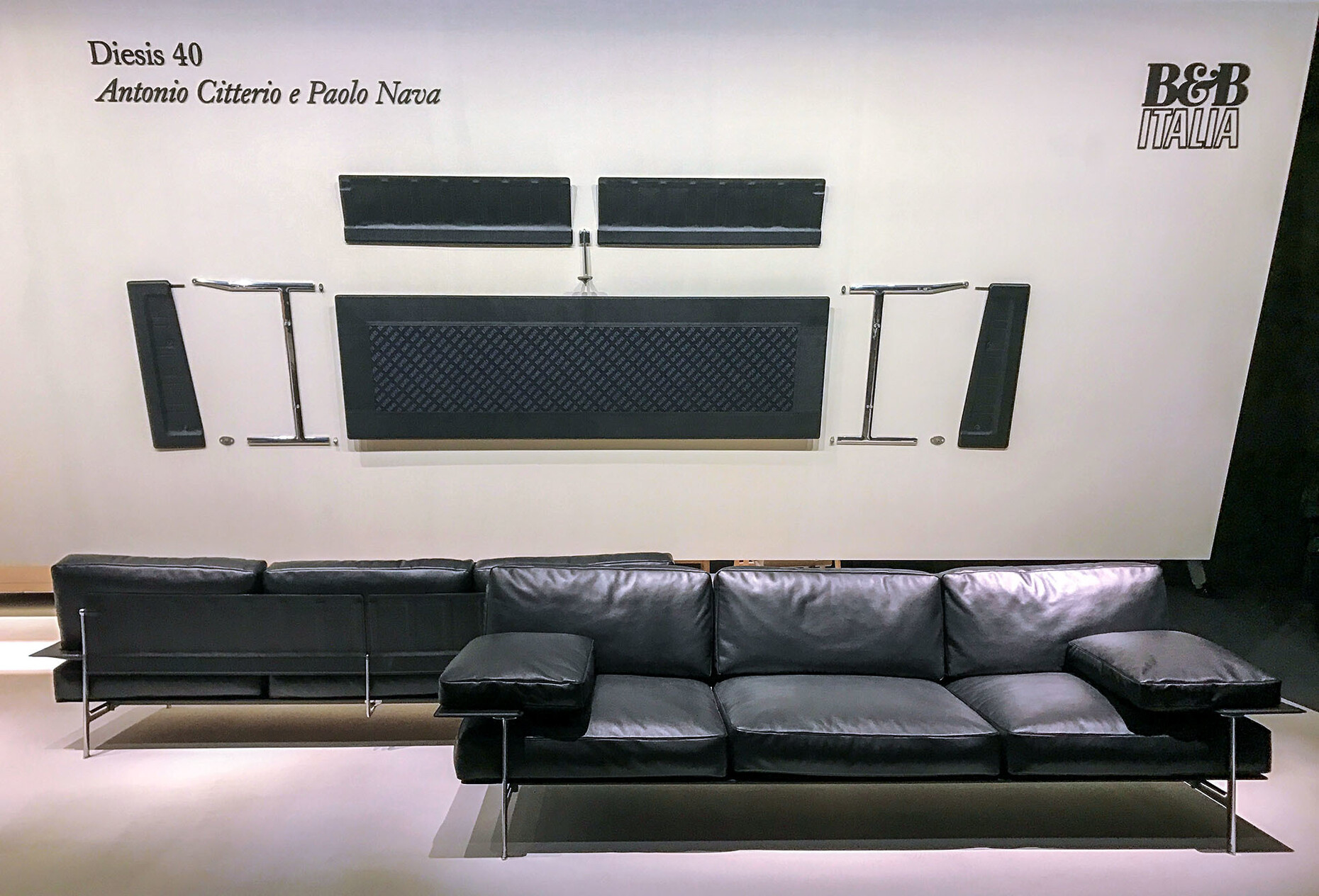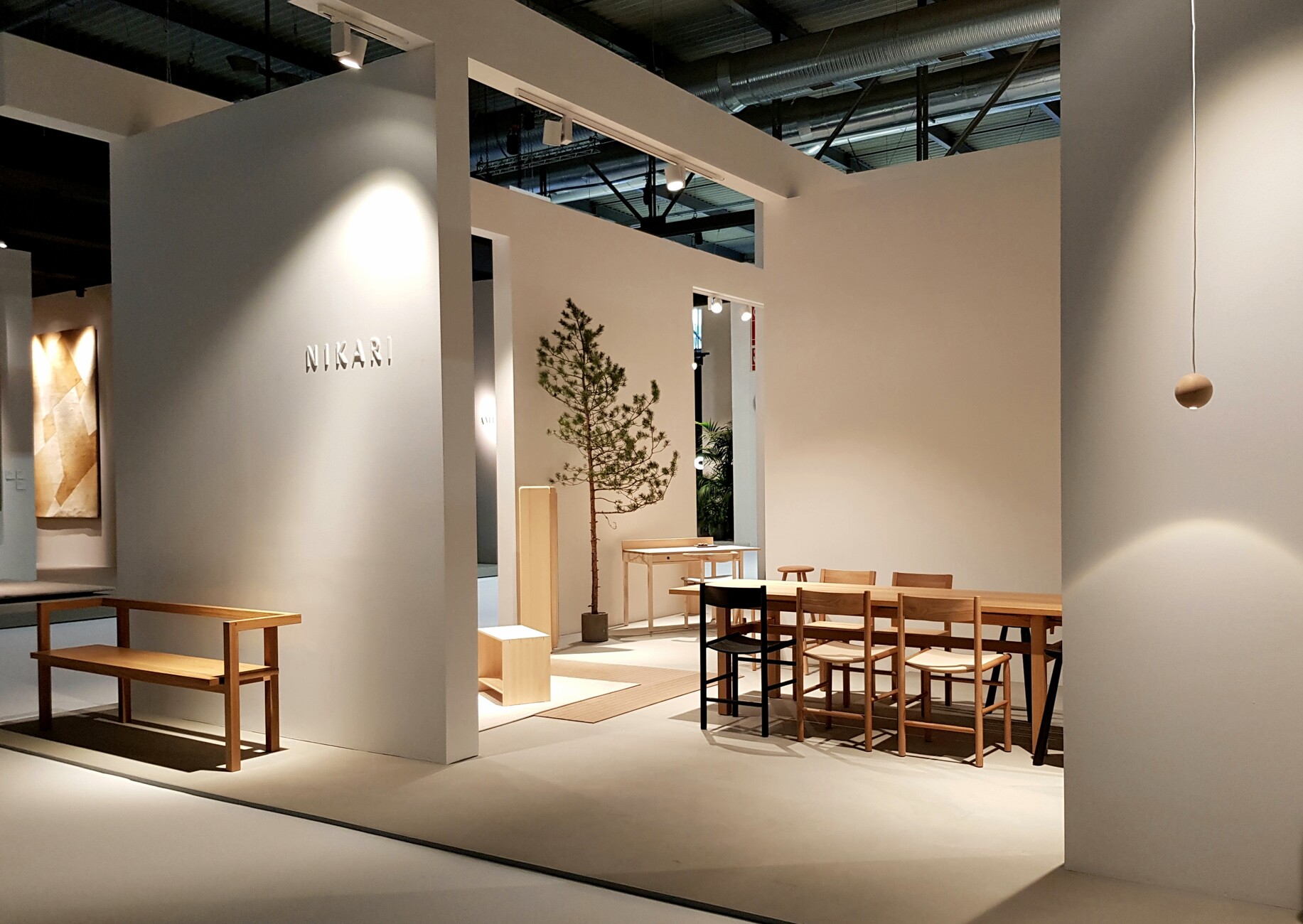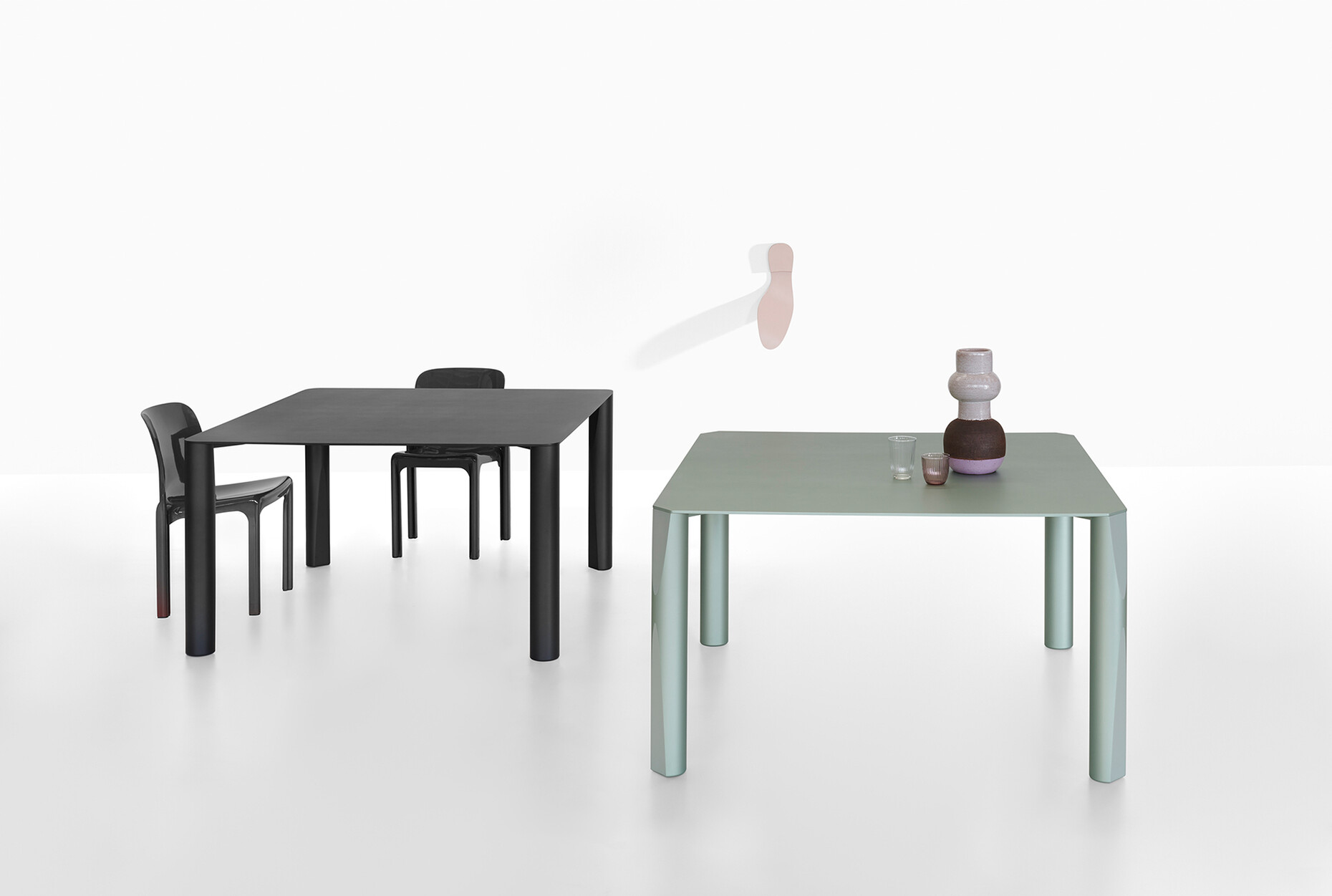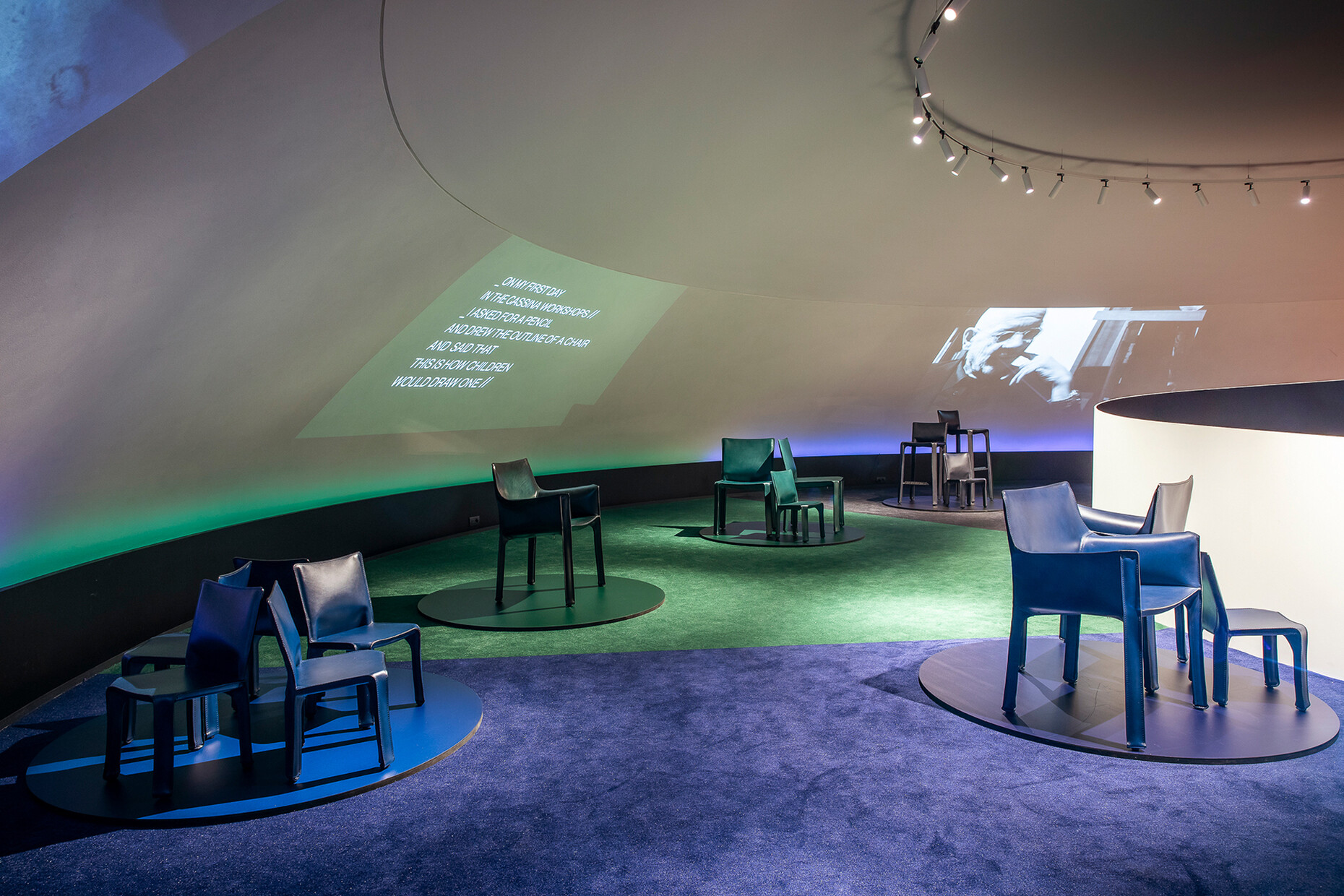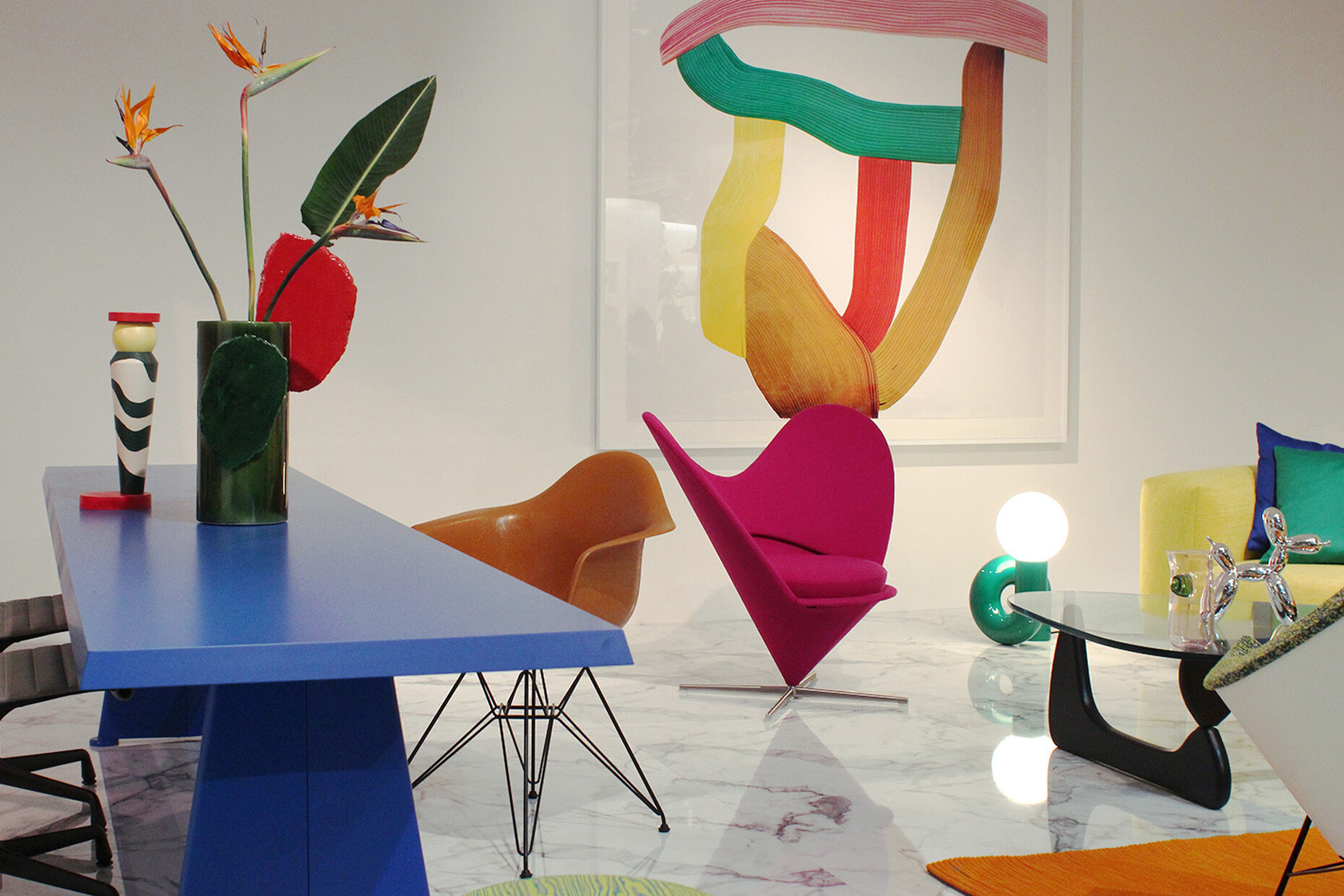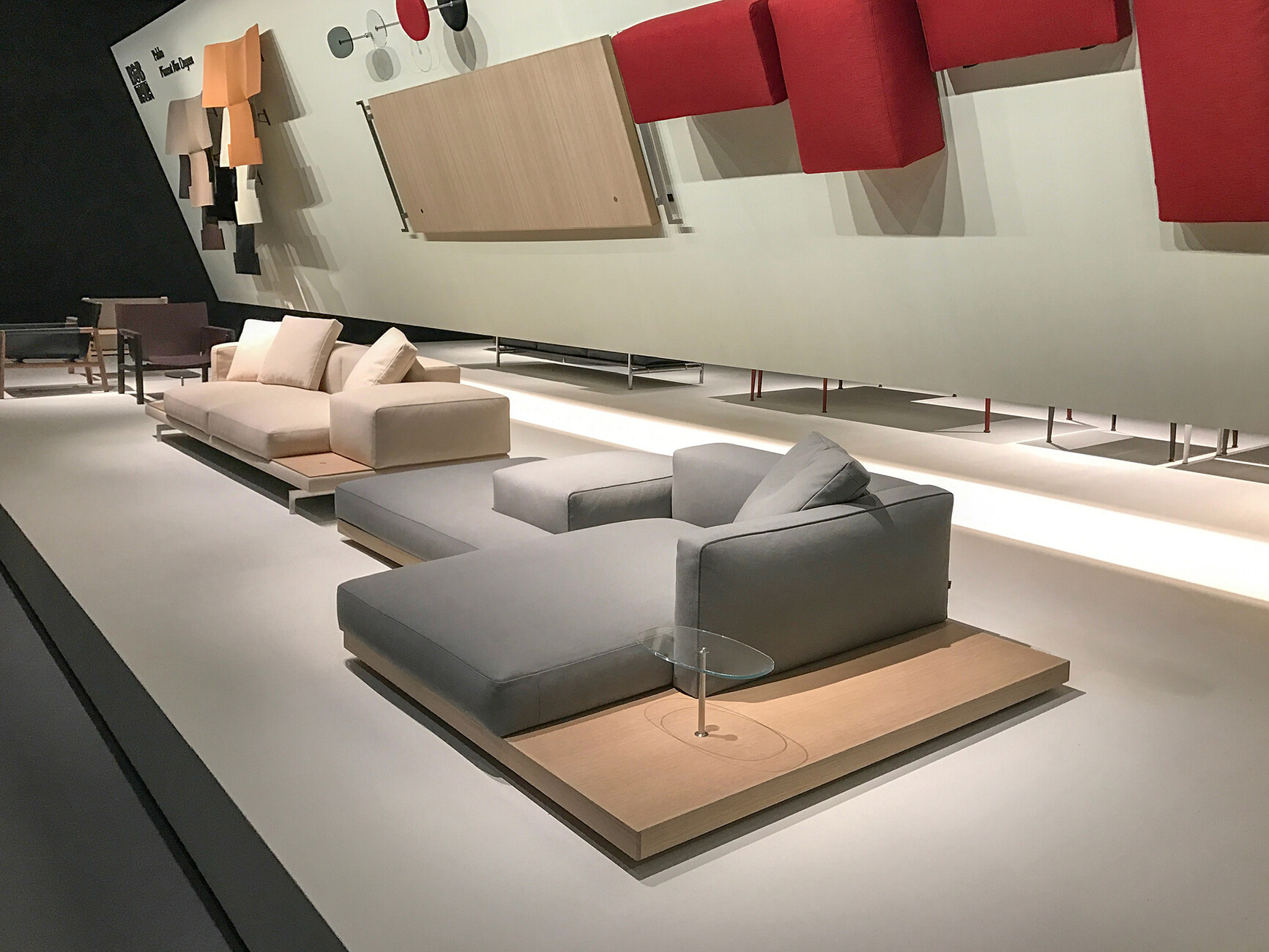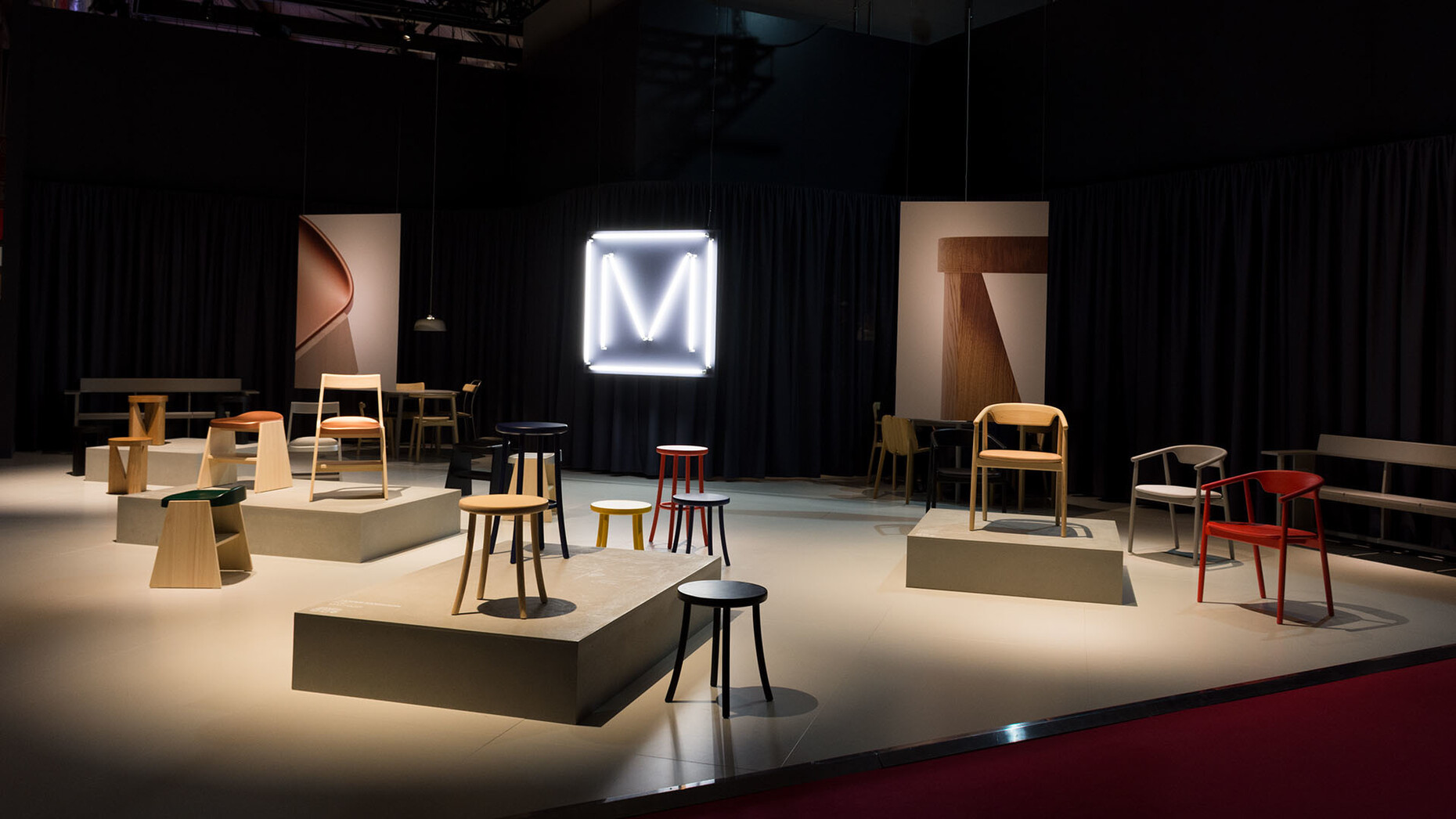SALONE DEL MOBILE 2019
Revival vs. Innovation
Entrance by invitation only! The announcement delivered by the two suited gentlemen at the entrance to the stand of Italian manufacturer Minotti at the Salone del Mobile is polite, but unambiguous. Dealers, press and invited guests are welcome, casual visitors are not. Nowadays many presentations are likewise off limits to regular visitors to the Milan furniture fair, for it is not only Minotti that has introduced admission control measures. Doormen only let selected visitors in. The Milan fair is becoming a victim of its own success. At the Salone 2018, visitor numbers were 26 percent up on the prior year alone. Figures that the fair organizers are proud to announce, but the impact of which is obviously increasingly taking its toll on the exhibitors. Wherever the crowds end up they leave a trail of destruction in their wake: for example, many floor coverings need replacing after just one day. And fair visitors are changing, too. Whereas in the past buyers and press reps from home and abroad predominated, in 2019 it was young people, frequently from the Far East: design aficionados, influencers, bloggers. The trade fair and manufacturers are finding it difficult coming to terms with this new audience. In particular, many Italian brands are responding by closing their doors – not a future-oriented strategy given the importance of social media for all contemporary forms of brand communication.
Like at the museum
Others are trying to channel the flows of people by means of their booth design: Vitra, Kartell, Moroso and several other manufacturers showed their products on proscenium stages or in a museum presentation of sorts. These carefully composed domestic dioramas are extremely “instagrammable” and are perfectly suited for dissemination via social media. At the same time, the exhibits are largely not directly accessible by the general public. Moreover, by arranging the products on pedestals and predetermined pathways, stand organizers can channel the flow of the masses while avoiding any major damage.
Design Holding came up with a solution in-between these concepts for brands B&B Italia, Flos and Louis Poulsen at the booth in Hall 24. A tunnel-like corridor led through the huge box in the center of the hall (the cube was closed on all sides) and presented a fascinating multimedia installation whereby visitors could initiate projections by touching the wall. On one side of the corridor it was invitation only. Here, conventional boredom was presented in the style of a flagship store – a zone where new products were presented to dealers in a familiar retail setting. The stand area on the other side of the corridor, which was open to all comers, was the complete opposite in scenographic terms. B&B Italia, for instance, displayed all its novelties on white walls depicting the individual components of the relevant exhibit. Flos and Louis Poulsen likewise presented their new products in white cube galleries. Visitor throngs? Instagrammability? No problem here!
A small leap forward
The joint stand by B&B Italia, Flos and Louis Poulsen formed the main focus of the new S. Project exhibition space that embraced Halls 22 and 24. With the new concept, which brings together design-oriented manufacturers irrespective of their size and market segment, the Milan furniture fair is taking up the idea that has long since proved highly successful at the imm Cologne – a full decade later. For even if Salone President Claudio Luti never tires of emphasizing that the Salone del Mobile, as the world’s leading trade fair, sets the standard for all rival events, in terms of the curation of the trade fair Milan has rested on its laurels for a very long time. It would appear the fair managers felt that the appeal of the Italian furniture industry was sufficient to ensure the Salone its market position. However, we are now seeing some change, albeit somewhat half-heartedly. For example, small, interesting firms were able to present their products on attractive stands in the S.Project halls – among them young Finnish label Nikari, which last year had to make do with a bed-sheet-sized cell on the edge of the action. This year it was able to highlight its sophisticated wooden furniture vis-à-vis the large De Padova booth in the center of Hall 22. That said, the organizers shied away from making any more radical changes even in the S.Project space – such as joining forces with the strictly separate young designer show “Salone Satellite,” with which it shares the halls. Instead, visitors had to hold their ticket in front of another scanner at the closely guarded entrance to the Satellite area in order to gain access – a superfluous and disruptive measure. The consequence: While at times people were treading on each other’s feet in the S.Project space, the Salone Satellite was as good as empty.
What about the product innovations at the Salone del Mobile? Let’s start with the good: Mattiazzi and Magis, long-time guarantors of exacting design, made a blazing comeback after a rather unremarkable appearance last year. Mattiazzi presented both “Cugino,” a sculptural stool by Konstantin Grcic, and “Fronda” by Sam Hecht and Kim Colin. The piece, showcased with and without a backrest, i.e., as a chair and a stool, consists of a wooden frame and an anatomically shaped metal seat. The latter naturally instantly calls to mind the famous tractor seat of the Castiglionis’ “Mazzadro” stool. The other novelties on show (a chair by Foster + Partners and another stool by Jasper Morrison) almost paled next to these truly outstanding designs. The new products Magis took to the Milan fair also received rave reviews – such as the prototype for the “Vela” chair by young Israeli designers Gilli Kuchik and Ran Amitai. It is a real feat not only formally, but also owing to the material used, namely magnesium – which while used in the auto industry has certainly not made inroads into furniture design. The material makes “Vela” light and sturdy in equal measure. And it is stackable too. Particularly worthy of mention among Magis’ novelties are also the luminaire “Lost” by duo BrogliatoTraverso, a ring whose outer surface is the light source, and Jasper Morrison’s chair “Plato,” with which the designer has developed the “supernormal” version of a classic garden chair. That said, the highlight among Magis’ new arrivals is unquestionably Stefan Diez’ sofa system “Costume.” Diez designed this completely modular system based on a simple premise: It had to be easy to replace, expand or recycle everything. In terms of its simple logic, “Costume” is revolutionary. It has a basic frame made of recyclable plastic, into which easily changeable foam padding is inserted. A cover is affixed over the padding by means of elastic fasteners. The armrests and additional seating elements are adjoined using metal clips. With this open and clearly visible structure, Stefan Diez reflects on classic virtues of a type of industrial design that, instead of relying on empty formal inventions, focuses on function.
New constructivism
It’s fair to say that Diez has been in top form in recent years. His design approach, which aims at technical advances, is illustrated at the Salone not just by “Costume,” but also by the light system “Plusminus” for Vibia. Its central component is a conductive textile belt on which various luminaires can simply be positioned. Only very few designers delve so deeply into the development of their designs as does Diez. Nonetheless, there is undeniably a renewed interest in construction, in artisanal and technical methods in evidence in Milan. Perhaps it is for this reason that several of the most interesting new products at the fair are made from “construction” materials, namely wood and metal. Notable here, for example, is Alfredo Häberli’s shell chair “Time” for Alias – it is made of paper-thin, bent and tacked plywood in line with a method developed for snowboard construction. Although the armchair looks more like a delicate origami artwork, it is not only sturdy, but also extremely comfortable – the optional seat cushion is actually superfluous.
Among the outstanding items of metal furniture is Maddalena Casadei’s “Verso” table, exhibited by the small label Fucina in a downtown showroom as part of the “Fuorisalone.” The table’s sophistication particularly comes to the fore looking at its supports. The four round table legs are partially chamfered, so that in profile they are not circular, but also have a straight side. Which is not only for decorative purposes. After all, “Verso” comes with two different tabletops: one with rounded corners (for which the legs are attached with the curved side facing outwards) and one with 45-degree corners (in which case the legs are mounted the other way round with the flat side facing outwards). In addition, the Fucina table is available in a stunning new metallic green, which suits it exceptionally well.
Back onto the couch
One trend that inevitably causes problems for designers is the seemingly unstoppable expansion of product lines. There is hardly a new chair that is not available with three different base frames and four different heights, with a high or a low back section, with and without armrests, in wood, in plastic and upholstered, as a lounger and bar stool. It takes a stroke of genius to design a product that is impressive in all these variations. Often the result is only mediocre in all versions as a consequence. Even grand old master Mario Bellini has now gone and added superfluous and rather unimpressively proportioned versions to his wonderful 1977 “Cab” chair for Cassina.
Incidentally, Cassina is not the only brand to reference classic leather seating furniture of the late 1970s and early 1980s in its own range. B&B Italia, for example, has dusted off the classic “Diesis” sofa by Antonio Citterio and Paolo Nava on the occasion of the piece’s 40th birthday. At the Zanotta stand “Milano” celebrated its return, designed in 1982 by Jonathan De Pas, Donato D’Urbino and Paolo Lomazzi – and now freshened up as “Milano+.” So instead of with postmodernist or Memphis extravagance, the 1980s revival is approaching us with the leather couch and the likewise revived velour carpet. At B&B Italia even the tile table is seeing something of a renaissance. Was that really necessary? Not that Antonio Citterio’s design, with its lace doilies printed on the tiles, can’t be read as an ironic commentary. But we dread to think of the countless, wholly un-ironic imitation products that may well soon try and enter our homes. There is at least no danger in this regard from the wonderful serving trolley by Richard Sapper, a superbly functional design from 1976 whose reedition Alessi showed as a prototype.
The dernier cri
So what else? The Salone “trends” of the 2019 season are lightly angled sofas and sofa systems with platform-like base structures, whose unpadded sections function as shelves or storage. Patricia Urquiola and Jaime Hayon have both simultaneously discovered their love of protruding backrest supports for sofas and armchairs, an idea that will no doubt soon do the rounds. A much-discussed topic every year is color trends. As we already saw at the imm Cologne 2019, there are plenty of flesh tones on view: powder pink, terracotta, nude. Here and there companies and designers are actually again striking up the courage to inject a splash of bold color. The ultraviolet cover of Stefan Diez’ “Costume” at Magis was almost daring.
Nowadays almost every renowned fashion label is elbowing its way onto the Salone scene with installations that have an artistic feel to them – in 2019 they included Jil Sander, COS, Issey Miyake, Strenesse, Prada, Tod’s, to name but a few. That said, there is also interest in the opposite direction. Benjamin Hubert’s “Tape” sofa for Moroso, presented last year as a prototype and now ready for production, introduces the taping of materials using polyurethane strips, otherwise known from the outdoor fashion sector, into furniture construction. And fashion is ahead of the traditional furniture manufacturers in another respect too; after all, no one showed such perfectly designed brand images as the furnishing lines highlighted by luxury labels Hermès and Louis Vuitton in their extremely elaborate presentations at the “Fuorisalone”. Here participants have long since realized that in 2019 staging products for photos is crucial and the young influencers, bloggers and design aficionados are the key to success – a lesson that many companies at the Salone 2019 have yet to learn.
